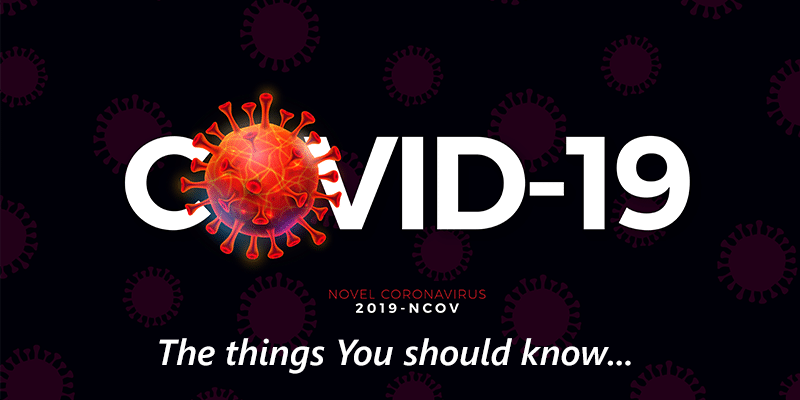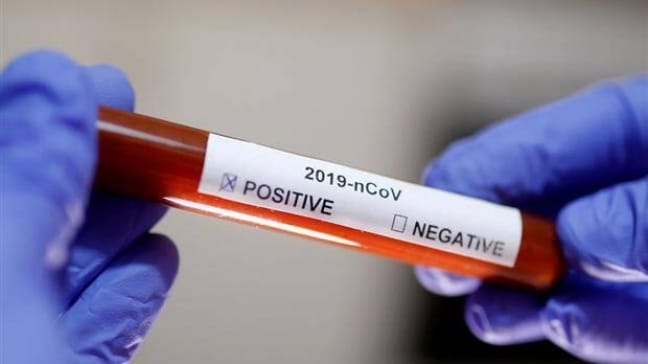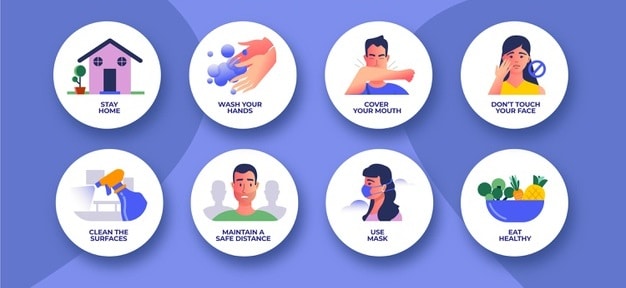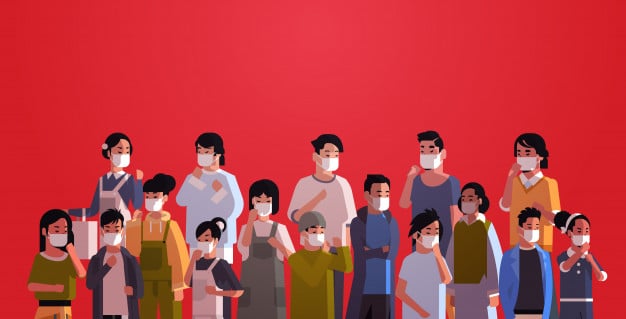Please log in to submit content!
Please log in to submit content!

By Animesh Sasmal Tuesday May 12, 2020
COVID-19 is an infectious disease caused by a newly discovered virus named as coronavirus. The name COVID 19 came from Coronavirus Disease 2019. This virus Also called as 2019-nCov, 2019 Novel Coronavirus.
Most of the infected people with the COVID 19 virus will experience mild to moderate respiratory illness and recover without requiring special treatment. Most of the senior citizens and people with other medical problems are more likely to develop serious medical issues.
The best way to prevent and slow down transmission is to be well informed about the Coronavirus pandemic situation. You should know how it spreads and how you can take precautions for this virus.
COVID-19 mainly attacks the respiratory system of the human body. Our lungs are the main targeted organs for this virus. As this virus only attacks our respiratory system, the spreading of this virus mainly happens through the droplets of saliva or discharge from the nose when an infected person coughs or sneezes. So it’s very important to practice respiratory etiquette to prevent the spreading of this virus.
Coronaviruses are a large family of viruses that may cause illness in animals or humans. In humans, several coronaviruses are known to cause respiratory infections ranging from the common cold to more severe diseases such as Middle East Respiratory Syndrome (MERS) and Severe Acute Respiratory Syndrome (SARS).
COVID-19 is an infectious disease caused by the most recently discovered coronavirus. This disease mainly connected with the respiratory system of the human body.
The first-ever case registered for this virus is from China. In December 2019 in Wuhan, China this new virus and disease were discovered.
An investigation by Chinese authorities said that some of the earliest known cases had a link to a wholesale food market in Wuhan.

Coronaviruses are a large family of viruses that have been around for a long time. Many of them can make people ill with sniffles or coughing. Coronaviruses were thought to cause only mild respiratory infections in the human body, before the SARS CoV-2 outbreak.
The new or the novel coronavirus is one of the main viruses behind the COVID-19 outbreak. It’s probably been around for some time in animals after that somehow it will infect humans. So this virus isn’t new to the world, but it is new to humans. When scientists found out that it was making people sick in 2019, they named it as a novel coronavirus.
Scientists have divided coronaviruses into four sub-groupings, called alpha, beta, gamma, and delta. Seven of these viruses can infect people.
The four common ones are:
The three less-common ones are:
The virus can spread from the person to person through small droplets from the nose or mouth which are spread when a person with COVID-19 coughs or exhales. These small infected droplets land on nearby objects and surfaces. By touching these objects or surfaces, anyone can catch coronavirus when they touch their eyes, nose, or mouth with the same hand. People can also be infected with COVID-19 if they breathe in droplets from the air where a person with COVID-19, coughs out or exhales droplets.
This is why it is important to maintain a physical distance of more than 1 meter from a person who is sick.
A recent study shows that this virus mainly transmitted through contact with respiratory droplets. So if you are surrounded by COVID-19 patients and they cough and exhale in your surrounding area, in this case, small respiratory droplets can fly in the air in that small area. Though it will be safe to inhale in the open air, If you have maintained a physical distance of 1 meter or more than 1 meter.
There is not enough data on the longevity of this virus on the surfaces. A study on coronavirus including preliminary information on the COVID-19 virus suggests that these may stay on surfaces for a few hours or up to several days. This may vary under different conditions that are the type of surface, temperature, or humidity of the environment.
If you want to clean an infected surface, clean it with simple disinfectant to kill the virus, and protect everyone. To clean your hands use an alcohol-based hand sanitizer or wash them with any kind of soap and water and strongly avoid touching your eyes, mouth, or nose.
The “incubation period” means the time between the first contact with the virus and beginning to have symptoms of the disease. A survey on a number of COVID-19 patients shows that the patients take 1 to 14 days to grow symptoms, most commonly around five days. These estimates are taken from the available data till March 2020.
The most common symptoms of COVID-19 are…
Some patients may have mild symptoms like aches and pains, nasal congestion, runny nose, sore throat, or diarrhea. These symptoms are usually light and begin gradually.
In some cases, infected people don’t develop any symptoms and also don’t feel unwell. These kinds of infected people are unknown to society so the chances of spreading viruses may be high in this case.
Most people recover from the disease without needing any special treatment. The percentage of these kinds of patients is near about 80%. Around 1 out of every 6 people who get COVID-19 becomes seriously ill and develop breathing difficulties.
Senior citizens and people with other medical problems like cardiovascular disease, diabetes, chronic respiratory disorder, and cancer are more likely to develop serious medical issues. People with fever, cough, and breathing issues should seek medical attention.
Protection measures for everybody

Always stay conscious of the newest information on the coronavirus pandemic, available on the national, state, and local public health authority. Authorities in China and a few countries have succeeded in slowing or stopping their outbreaks. However, things are unpredictable day by day, so check regularly for the latest updates.
Some simple precautions can reduce the chances of being infected or spreading coronavirus:
Regularly and thoroughly clean your hands with an alcohol-based hand rub or wash them with soap and water for more than 20 seconds.
Why?
Washing your hands with soap and water or using alcohol-based hand rub kills viruses that may be present on your hands.
Maintain a minimum of one-meter physical distance between yourself and anyone who is coughing or sneezing.
Why?
When an infected person coughs or sneezes they spray small liquid droplets that may contain the virus. If you don’t maintain a physical distance of a meter, you can breathe in those droplets from the air, including the COVID-19 virus.
Avoid touching eyes, nose, and mouth.
Why?
In a day, our hands touch many surfaces and might pick up viruses. After touching an infected surface our hands can transfer the virus to our eyes, nose, or mouth. From there, the virus can enter your body and may cause you to feel sick.
Practice respiratory etiquette and hygiene. This suggests while coughing or sneezing you should cover your mouth and nose with your bent elbow or tissue. Then dispose of the used tissue immediately. Always use a mask when you are in a crowded place.
Why?
Droplets spread the virus. By following those respiratory etiquettes you can protect the people around you from coronaviruses as well as from viruses like cold, flu, and COVID-19.
Stay home if you are feeling unwell. If you’ve got a fever, cough, and difficulty in breathing, seek medical attention, and call in advance. Follow the directions of your local health authority.
Why?
Government authorities or the nearest health authorities will have the most up to date information on the situation in your area. Contacting in advance will allow your health care provider to quickly direct you to the right health facility. This may also protect you and help prevent the spread of viruses and other infections.
Keep up to date on the latest COVID 19 hotspots, the cities, or local areas where COVID 19 is spreading widely. Try to avoid traveling to those places.
Why?
You have a higher chance of catching COVID-19 in one of these hotspot areas.
Protection measures for persons who have recently visited areas where COVID-19 is spreading.
Follow the guidance outlined above on the ‘Protection measures for everybody’ section. Along with those points follow the below instructions if you have visited any COVID 19 hotspot area in the last 14 days.
Self-isolate by staying at home if you begin to feel unwell, even with mild symptoms such as headache, low-grade fever (37.3 C or above), and a slight runny nose. Wear a mask to avoid infecting other people and contact with the nearest health authorities for further instruction.
Why?
Avoiding contact with others and concern with the health care system will allow the medical team to operate more effectively and help you to protect you and others from possible COVID-19.
If you develop fever, cough, and difficulty breathing, seek medical advice, and tell your health provider of any recent travel history or contact with travelers.
Why?
Contacting in advance with the travel history may help your health care provider to understand the chances of being infected with the COVID 19. So that they can quickly direct you to the right health facility. This will also help to prevent the possible spreading of COVID-19 and other viruses.
At this point, there are not any specific coronavirus vaccines or treatments for COVID-19. Despite this, many small or big medical organizations from all over the world, are trying to find potential treatments for this disease. WHO says they will provide updated information as soon as clinical findings become available.
A report of the WHO-China Joint Mission on Coronavirus Disease 2019 says that the time from the beginning to the clinical recovery for mild cases is approximately 2 weeks and is 3-6 weeks for patients with the critical disease.
Preliminary data suggest that the time period from onset to the development of the severe disease, including hypoxia, is 1 week. Among patients who have died, the time from symptom onset to outcome ranges from 2-8 weeks.
Most of the COVID cases seem to be mild, though it can make some people very ill, and in more rare cases it can be fatal. Older people and those with pre-existing medical conditions (such as high blood pressure, heart problems, or diabetes) appear to be more vulnerable.
The COVID 19 outbreak in India happens in the month of January 2020. The first case was reported on 30 January 2020, originating from China. Since then the Ministry of Health and Family Welfare has confirmed a total of 67,152 positive cases, 20,917 recoveries, 44,335 active cases, and 2,206 deaths in the country (Till 11th May 2020). The rate of infection of COVID-19 in India is reported to be 1.7 and it is significantly lower than other countries in terms of population density.
India’s government has taken some strong steps to reduce the rate of spreading of the virus. The outbreak has been declared an epidemic in more than 30 states and union territories combined, where provisions of the Epidemic Diseases Act, 1897 have been invoked, and educational institutions and many commercial establishments have been shut down. India has suspended all tourist visas and closed all international airports and flights, as a majority of the confirmed cases were linked to other countries.
India observed a 14-hour voluntary public curfew on 22 March 2020 ordered by the Prime Minister Narendra Modi. Further, on 24 March, the prime minister ordered a nationwide lockdown for 21 days. This is the starting of the lockdown period in India. After that, there are two more lockdown phrases till 17th May 2020.
India has also taken steps like ‘Vande Bharat Mission’, which is a massive operation planned by the Indian government to bring back the stranded Indians in different parts of the world. All the states and central government strongly request the people to maintain social distancing.
The most affected states are
| State | Confirmed | Active | Recovered | Deceased |
|---|---|---|---|---|
| Maharashtra | 24,427 | 18,381 | 5,125 | 921 |
| Gujarat | 8,904 | 5,121 | 3,246 | 537 |
| Tamil Nadu | 7,718 | 6,606 | 2,051 | 61 |
COVID-19 timeline (India):
| Time Zone | No of cases |
|---|---|
| 30th January 2020 | 1 |
| 14th March 2020 | 100 |
| 28th March 2020 | 1,000 |
| 7th April 2020 | 5,000 |
| 13th April 2020 | 10,000 |
| 21st April 2020 | 20,000 |
| 3rd May 2020 | 40,000 |
| 6th May 2020 | 50,000 |
| 12th May 2020 | 70,000 |

Data source:
Write a comment.